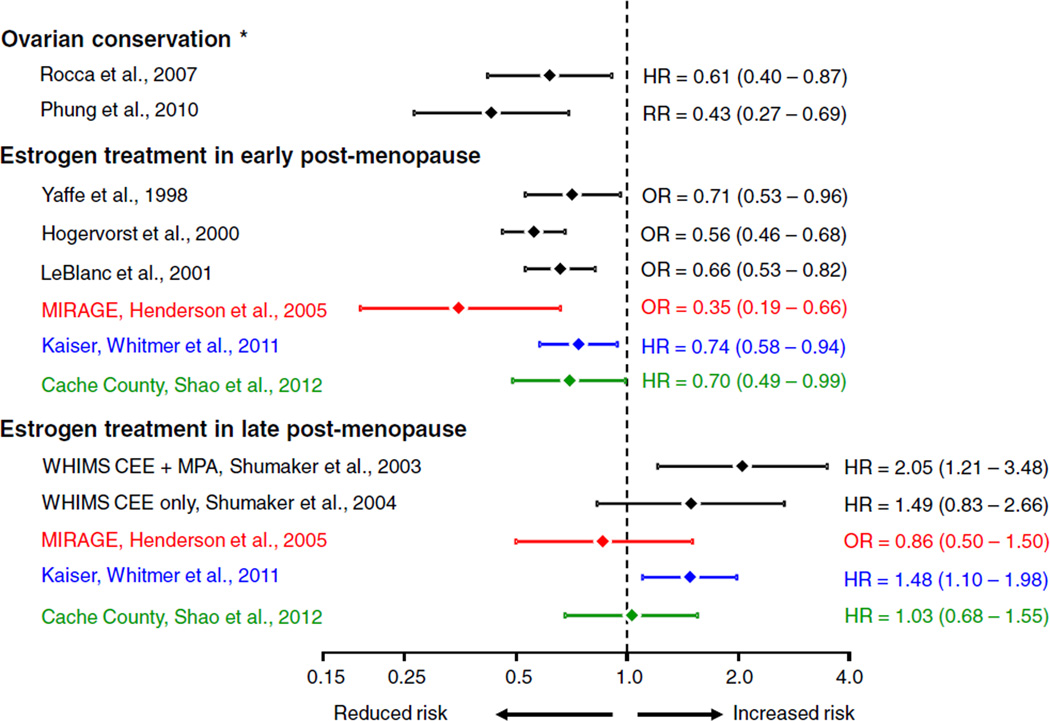Fig. 2.
An update on the timing hypothesis. The effect of estrogen on the risk of cognitive decline or dementia varies with the age at which estrogen is removed (via bilateral oophorectomy) or added as pharmacological treatment. The figure shows the results of 13 studies expressed as relative risks (RR), odds ratios (OR), or hazard ratios (HR) and 95% confidence intervals (plotted on a logarithmic scale). Women with ovarian conservation have a reduced long-term risk of cognitive decline or dementia compared to women who underwent bilateral oophorectomy before menopause (most commonly before age 50 years). * One additional study confirmed the protective effect of ovarian conservation; however, the results were not reported using comparable relative risk estimates and could not be displayed (Bove et al., 2014). Treatment with estrogen in the early postmenopausal stage (most commonly at ages 50–60 years) is associated with a reduced long-term risk of cognitive decline or dementia in three meta-analyses. However, initiation of estrogen treatment in the late postmenopausal stage (ages 65–79 years) is associated with an increased risk of cognitive impairment or dementia. Three studies tested the timing hypothesis by conducting stratified analyses by age at the time of hormonal treatment. The two strata for the MIRAGE study are shown in red, for the Kaiser study are shown in blue, and for the Cache County study are shown in green. CEE = conjugated equine estrogen; MIRAGE = Multi-Institutional Research on Alzheimer Genetic Epidemiology study; MPA = medroxyprogesterone acetate; WHIMS= Women’s Health Initiative Memory Study (Bove, 2014; Rocca, 2007; LeBlanc, 2001; Shumaker, 2004; Shumaker, 2003; Yaffe, 1998; Hogervorst, 2000; Phung, 2010; Bove, 2013; Whitmer, 2011; Henderson, 2005; Shao, 2012).
[Modified from Rocca et al., 2011(Rocca et al., 2011)].

